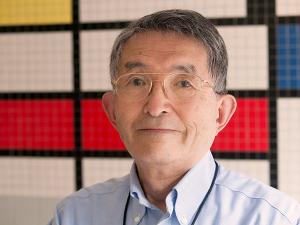
Senior Research Scientist
Head, Magnet Technology, Francis Bitter Magnet Laboratory
MIT. Bachelor of Science, Mechanical Engineering (1962)
MIT. Master of Science, Mechanical Engineering (1962)
MIT. Master of Science, Electrical Engineering (1962)
MIT. Electrical Engineer, Electrical Engineering (1964)
MIT. Doctor of Philosophy, Electrical Engineering (1967)
Superconducting magnet technology; cryogenic engineering.
Low- and high-temperature superconducting magnet technology (stability and protection; AC losses and other disturbances; monitoring; magnet manufacturing; cryogenic engineering); NMR and MRI superconducting magnets; liquid-helium-free superconducting magnets; solid cryogens as thermal mass enhancers.
US Patent 8,965,468: Persistent-mode high-temperature superconducting shim coils to enhance spatial magnetic field homogeneity for superconducting magnets
US Patent 8,228,148: Annular magnet system for magnetic resonance spectroscopy
US Patent 7,859,374: Annular magnet system for magnetic resonance spectroscopy
US Patent 6,389,685: Method for current sharing in a superconducting current lead
US Patent 5,724,820: Permanent magnet system based on high-temperature superconductors with recooling and recharging capabilities
US Patent 5,332,988: Removable coil form for superconducting nmr magnets and a method for its use
Pending US Patent: No-insulation multi-width winding for high temperature superconducting magnets (to be issued on August 25, 2015)
Yukikazu Iwasa and Seungyong Hahn, 4.5 Magnets on NMR and MRI in Applied Superconductivity; Handbook on Devices and Applications, Encyclopedia of Applied Physics, Paul Seidel, Ed. (Wiley-VCH, Berlin, 2015).
Yukikazu Iwasa, Case Studies in Superconducting Magnets, 2nd Edition (Springer, 2009).
Yukikazu Iwasa, Case Studies in Superconducting Magnets (Plenum Press, New York, 1994).
Y. Iwasa and D. B. Montgomery, a chapter, Superconducting Magnets, in Applications of Superconductivity, V.L. Newhouse, Ed., (Academic Press, New York, 1975).
Kazuhiro Kajikawa, Gwendolyn V.~Gettliffe, Yong Chu, Daisuke Miyagi, Thibault Lècrevisse, Seungyong Hahn, Juan Bascuñàn, and Yukikazu Iwasa, “Designs and tests of shaking coils to reduce screening currents induced in HTS insert coils for NMR magnet,”
IEEE Trans. Appl. Supercond. 25, 4300305 (5pp) (2015).
Yukikazu Iwasa, Juan Bascuñàn, Seungyong Hahn, John Voccio, Youngjae Kim, Thibault Lecrevisse, Jungbin Song, and Kazuhiro Kajikawa, “A high-resolution 1.3-GH/54-mm LTS/HTS NMR magnet,” IEEE Trans. Appl. Supercond. 25, 4301205 (5pp) (2015).
Carmine Senatore1, Matteo Alessandrini, Andrea Lucarelli, Riccardo Tediosi, Davide Uglietti, Yukikazu Iwasa, “Progresses and challenges in the development of high-field solenoids based on RE123 coated conductors,” Supercond. Sci. Technol. 27, 103001 (26pp) (2014).
Yukikazu Iwasa and Seungyong Hahn, “First-cut design of an all-superconducting 100-T direct current magnet,” Appl. Phys. Lett. 103, 253507\:(5pp) (2013).
Seungyong Hahn, Youngjae Kim, Dong Keun Park, Kwangmin Kim, John P. Voccio, Juan Bascñàn, and Yukikazu Iwasa, “No-insulation multi-width winding technique for high temperature superconducting magnet,” Appl. Phys. Lett. 103, 173511 (3pp) (2013).
Yukikazu Iwasa, Seungyong Hahn, John Voccio, Dong Keun Park, Youngjae Kim, and Juan Bascuñàn, “Persistent-mode high-temperature superconductor shim coils: a design concept and experimental results of a prototype $Z1$ high-temperature superconductor shim,” Appl. Phys. Lett. 103, 052607 (3pp) (2013).
Design, manufacture, and operation issues of superconducting magnets for major engineering applications in biomedical science (NMR/MRI), high energy physics (dipole/quadrupole/detector), and electric power (motor/transformer/transmission cable). Beginning with review of superconductivity and its applications and electromagnetic theory, the course focuses on: 1) field analyses; 2) mechanical and thermal stress analyses; 3) stability analyses and protection design; 4) cryogenics; 5) experimental techniques; and 6) harmonic analyses and active-passive shimming for NMR/MRI magnets.
IEEE Oral History IEEE (released February 2015)